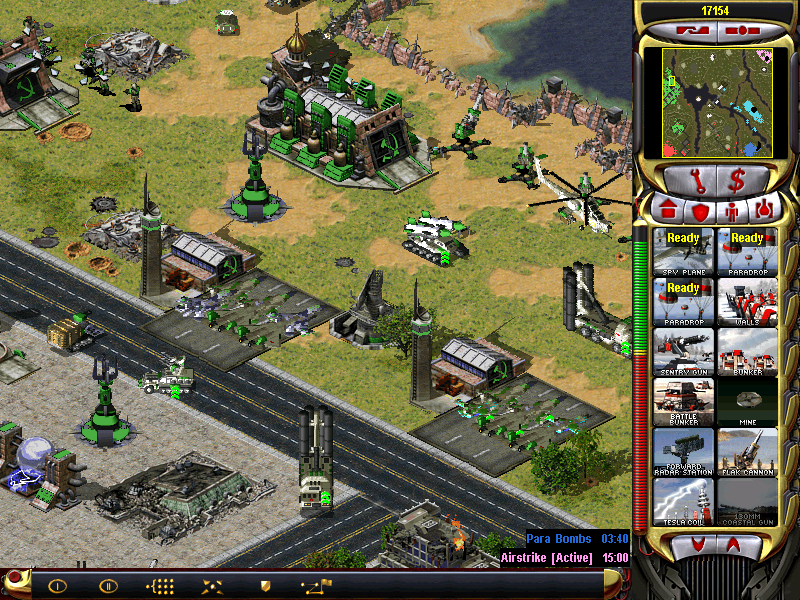

For example, as a strategy game, Red Alert is more even-handed than people tend to remember. But the quality of Red Alert's design shines through in lots of surprising ways. It's a spectacular experience, which seems odd to say about a game that is visually so antiquated (unless you're playing the remaster, of course). But the way these scenarios see you rip through units and structures is almost arcade-like.

This isn't to say they are mindless affairs you've still got to navigate the map carefully to ensure Tanya doesn't get mauled by Soviet attack dogs or squashed by a tank. This is particularly the case in smaller-scale scenarios, such as an early Allied mission where one-woman-army Tanya Adams joins up with a handful of units to destroy a network of bridges and halt the Soviet advance. The pace of Red Alert, combined with its fondness for explosives, often makes it feel more like a top-down action game than an RTS. Those nondescript grey squares are often positioned so that explosions spread around the map, destroying enemy units and structures in spectacular, cascading infernos. Initially it's odd to see this staple of the FPS appear so readily in a strategy game, but they fit perfectly within Red Alert's fast-paced and dynamic scenarios. Red Alert's missions are explosive in a literal sense too, due to the large number of highly combustible barrels littering environments. Even Relic's Company of Heroes, the RTS most known for its cinematic flair, doesn't begin as explosively as Red Alert. Whether you execute a daring Allied mission to rescue Einstein from Soviet clutches, or embark on a shocking and bloody purge of an Eastern European village as Stalin's most ruthless general, the opening missions of Red Alert are bold and immediate, grabbing a hunk of your shirt and yanking you into the action. What better way for Westwood, riding high on the success of their military RTS, to celebrate than with a game that lets you kick Stalin right in the moustache?Īnd Red Alert really does begin with a kick.

The Soviet Union had collapsed only five years before, and both Cold War tensions and their end would have been fresh in the minds of the development team. Red Alert's conflict is based upon one that had already been resolved, albeit only recently.


 0 kommentar(er)
0 kommentar(er)
